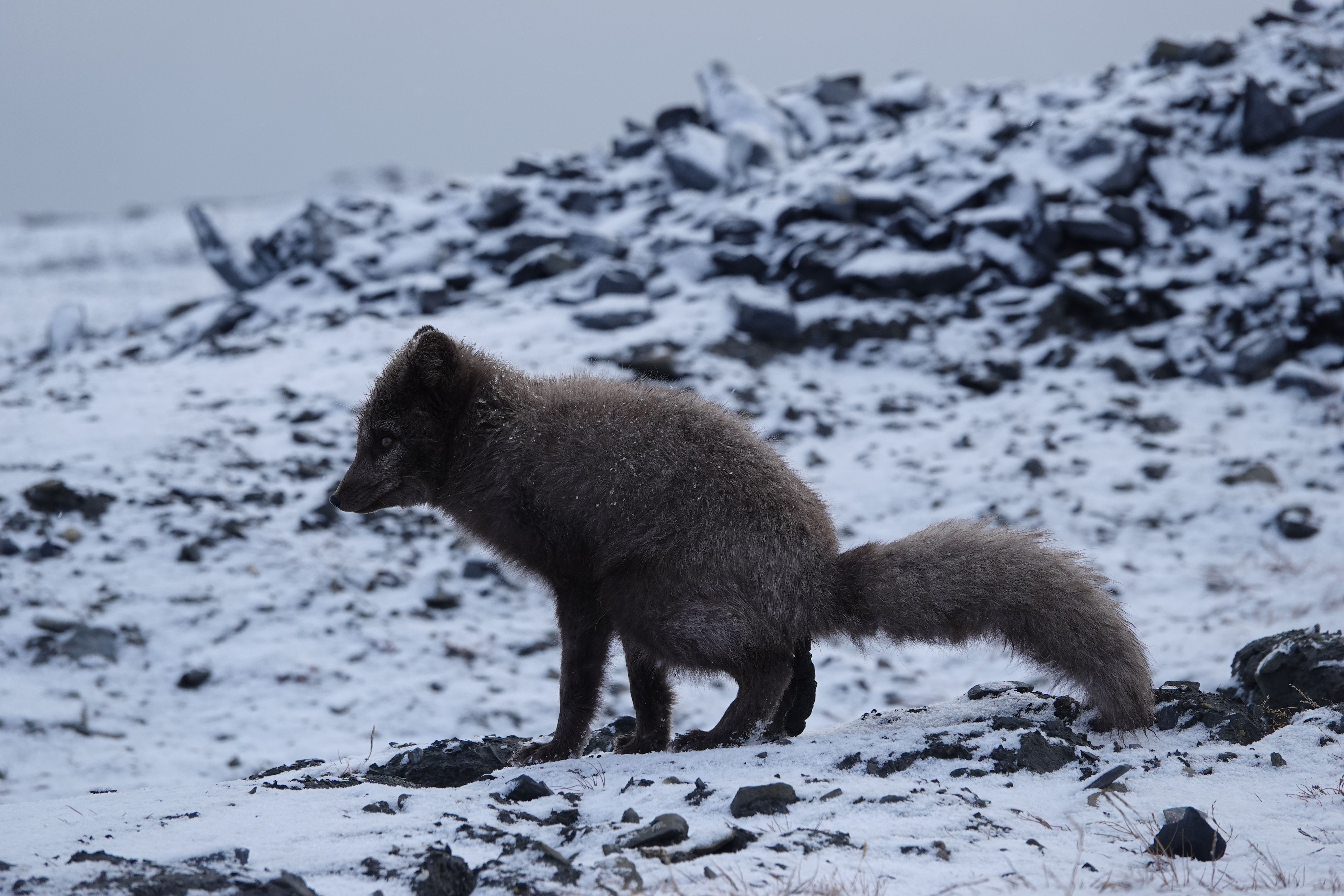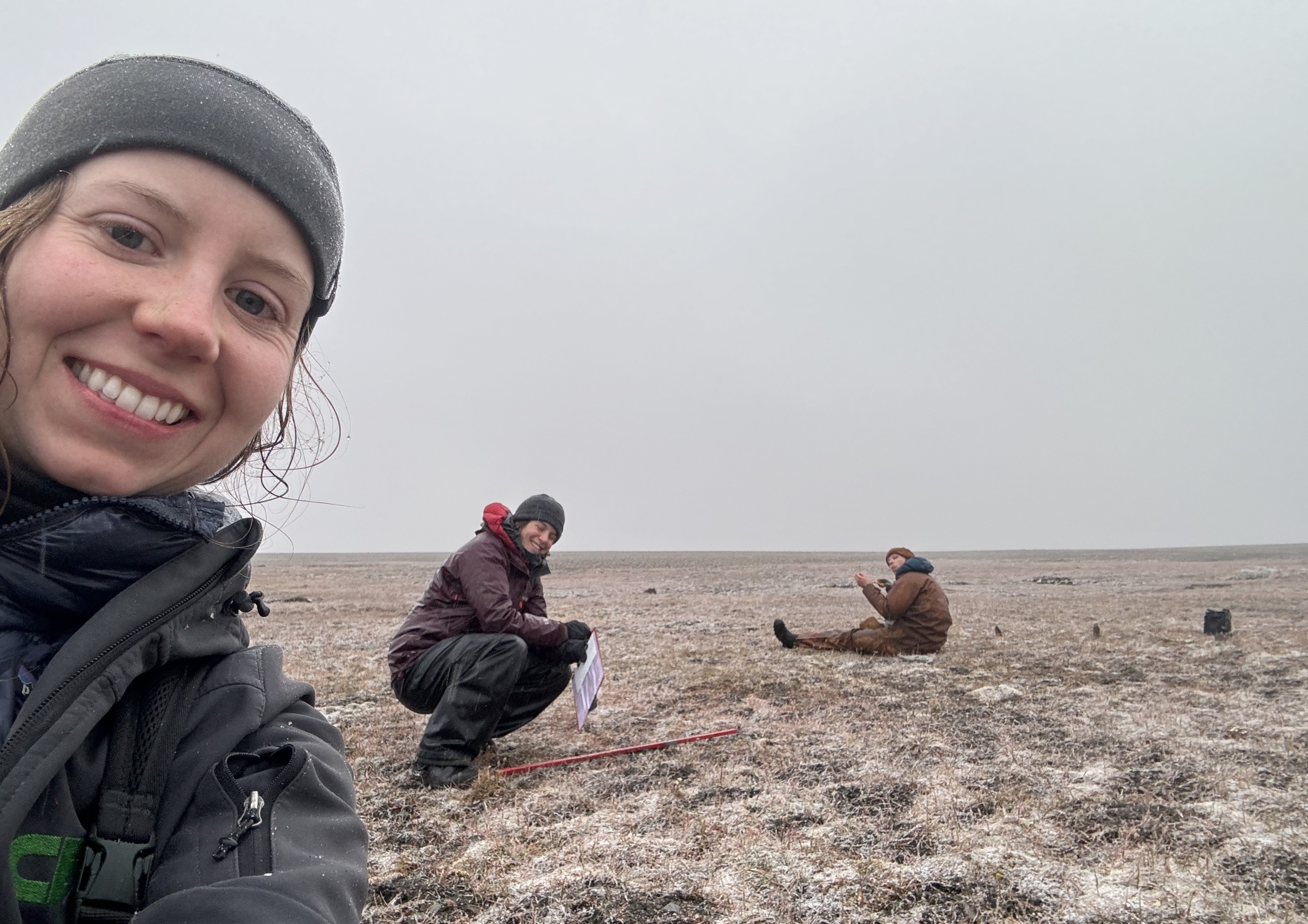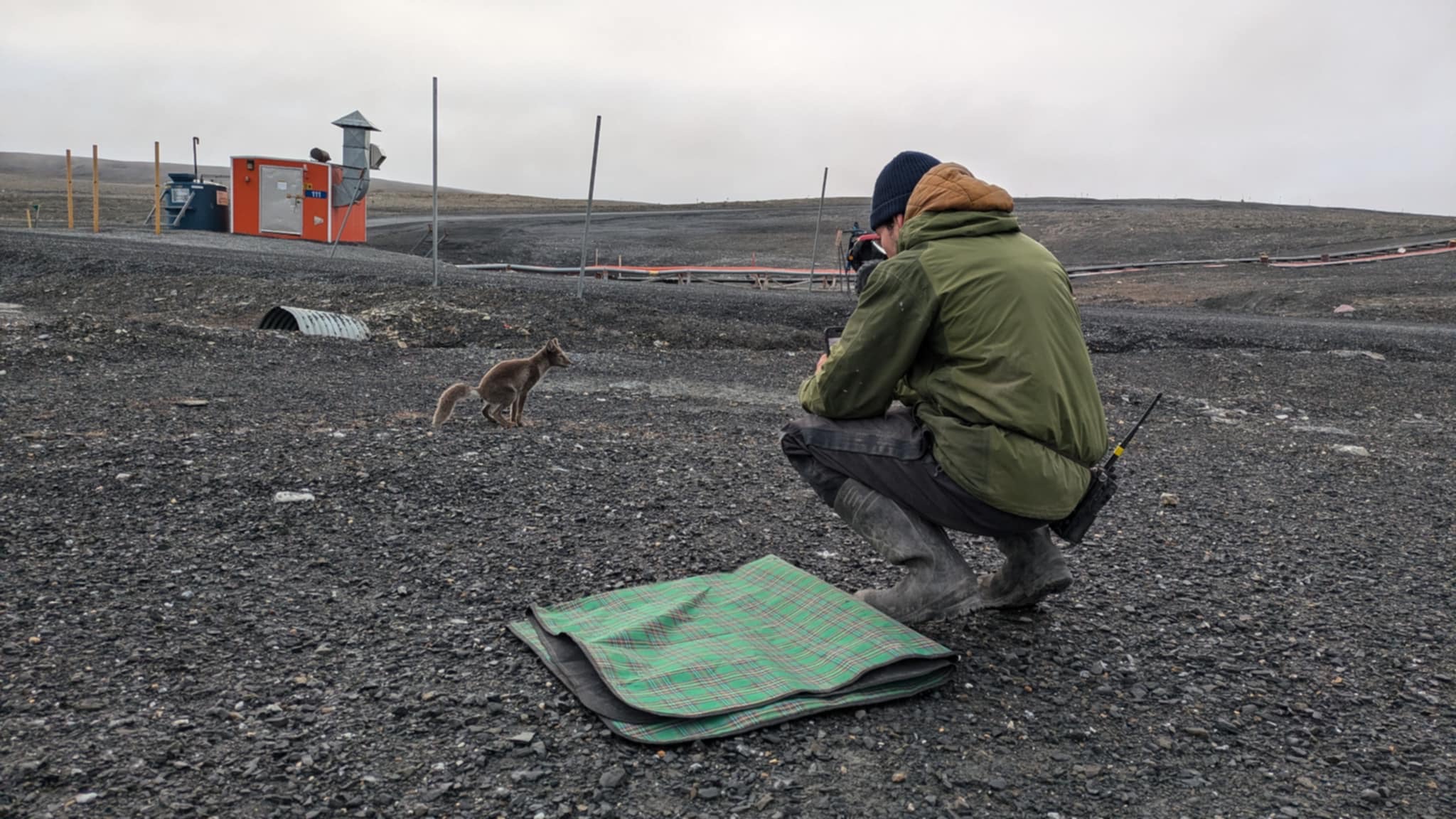Arctic Poo: Scientific Treasure Troves of the Great Canadian North?
Animal droppings… why oh why are scientists so fascinated by them? Yep, this article is all about… poo! We spoke with biology student Émilie Desjardins, member of the Centre for Northern Studies working on her PhD at Université du Québec à Rimouski. Émilie is passionate about her research and spends part of her time tracking the little “treasures” Arctic animals leave behind. Turns out, they are just packed with useful information! Thanks to animal droppings, scientists can learn all sorts of things about animals without having to bother them.
Nature’s Own Tracking Devices
How can a scientist find out where an animal has been, what they ate, and if it might be sick but without ever laying eyes on it? Many times, they can just look down! As scientists will tell you, droppings are like encrypted messages from the animal world.
Émilie told us what these secret messages can contain:
- Food diary: When analyzing droppings, scientists find leftover plants, fur, and sometimes little bones. Droppings are a record of what animals snacked on! Very useful for scientists trying to understand “who eats what” in the ecosystem they are studying.
- Bill of health: Got parasites? Or maybe a virus? Analyzing an animal’s doo-doo can help scientists learn about its health, which is essential for those monitoring animal populations.
- Mapping: When lots of droppings are found in one area, this sometimes alerts scientists that it’s a hot spot, maybe where animals breed, maybe a natural boundary, or sometimes where a predatory animal had itself a feast.
- Head counts: When scientists find a few droppings here, and a few more there, they can take educated guesses about how many animals live in the area and where they like to wander. That’s critical information for those looking to develop custom designed animal protection strategies.
- Watch lists: Animal droppings are especially useful when monitoring rare or endangered species, especially those that are really good at staying out of sight.
- Genetic ID cards: Poo are you? Hard to believe, but DNA found in droppings can help scientists figure out the species of animal that left it behind. Not only that; they can also tell if it was male or female, and sometimes they know exactly which animal it came from!
The Great Canadian North Poo Mission

So how does Émilie manage to find all these precious little treasures? Émilie’s work is focused on protecting caribou and musk oxen, so she studies their habitats in Peary and in Alert. Alert is the most northern place on Earth where people live, and Émilie does her research there to better understand the habitats these animals prefer.
Caribou and musk oxen are rare and standoffish, so Émilie needs to be sly! She observes them with her own eyes when she can. Otherwise, she uses motion-sensing cameras. And, of course, she also looks for poo! “I roam random parcels of land in different environments and keep my eyes peeled for little treasures on the ground,” she tells us. When she finds one, she whips out her gloves, pops it in a paper bag, and jots down the date, her GPS coordinates, and the species.
Want to know what everyone always asks her? You guessed it: “Are they stinky?”

“It depends!” she explains, laughing. “When you find droppings from an animal that eats plants, they don’t usually smell, but droppings from animals that eat other animals can get pretty stinky! A couple of times I’ve found fresh droppings from Arctic wolves and foxes, and wow, the smell was really intense, almost to the point of retching!” But her scientific side explains that “it’s all part of the work, and you get used to it.”
A One-of-a-Kind Collection… and an Astonishing Adventure
Once Émilie has collected them, droppings are dried, measured, photographed, tagged, and carefully stored in a special cabinet at her lab at Université du Québec à Rimouski. It’s a bona fide scientific collection! Émilie hopes to write a guide one day to help scientists identify Arctic animal droppings. Useful, because droppings are very different from one species to the next, and they also vary based on what that species eats, the time of year, and the age of the animal in question.
When Émilie prepared her treasure trove to showcase at the Science Centre’s Nanualuk exhibition, she picked the finest fox, caribou, and musk ox poos from her collection. But during a stop in Ottawa for a conference… gosh dung it… someone stole her collection case from her car! With a big smile splashed on her face, she explains, “I immediately laughed. Imagine how surprised the thief must have been when they opened the case and found a priceless collection of… poo!” Gladly, she was able to put together a whole new set of fine animal droppings and bring them to us herself for the exhibition. Phew!
More Than Just Poo: An Arctic Exploration Lab

Émilie’s poo research is part of a larger research project happening inside her lab. Some of her fellow scientists are using GPS collars to study how hares and foxes move across their habitats, others are watching polar bears, and others are analyzing the diversity of Arctic plant life. All this work will help create models of the Arctic food chain, in other words, a reference guide about “who eats who.” This kind of guide will help scientists better understand how things work in this fascinating, but fragile, Arctic environment.
Come Get the Straight Poop and Learn Loads about the Arctic at Nanualuk!

To learn more about Arctic animal droppings and all sorts of great things about the Great Canadian North, come visit the new game-based exhibition Nanualuk – Northern Expedition!
While you’re here, you might get a whiff of the question everyone is asking: are the animal droppings in the exhibition… real?! Breathe easy! They may look real, but they are in fact true-to-life moulds made from real poo specimens Émilie collected herself up in the Arctic!
